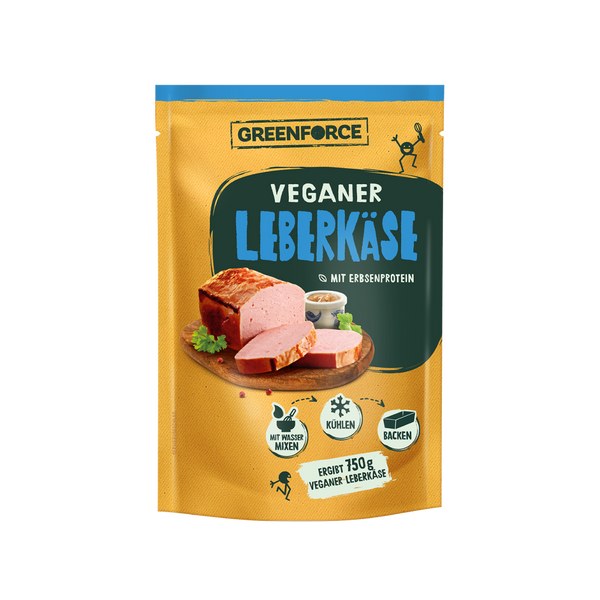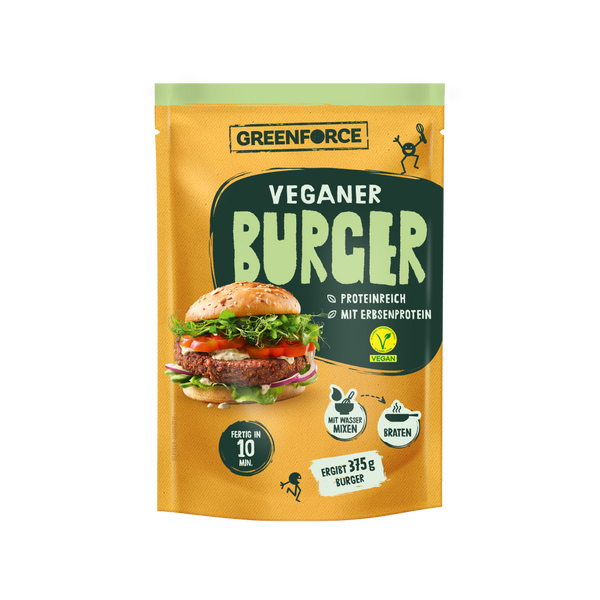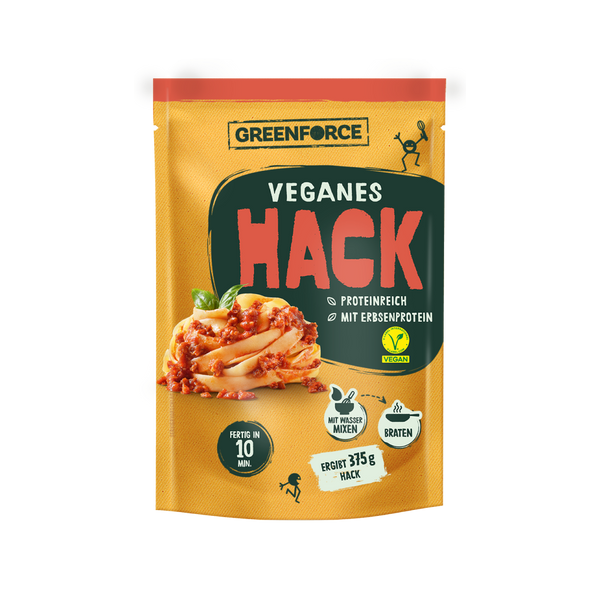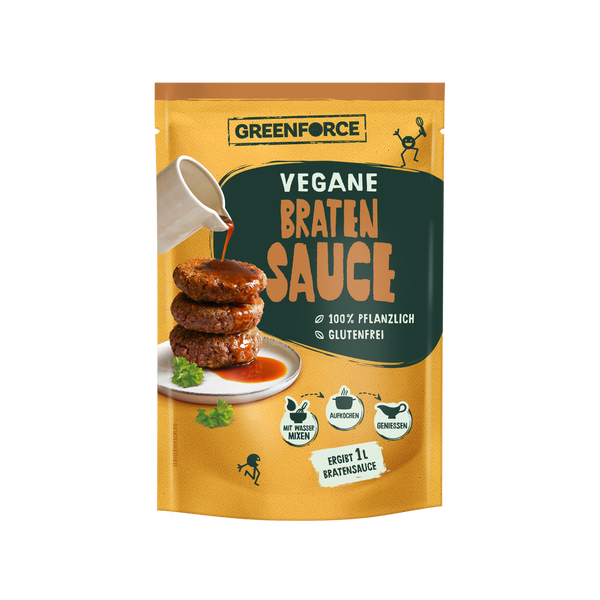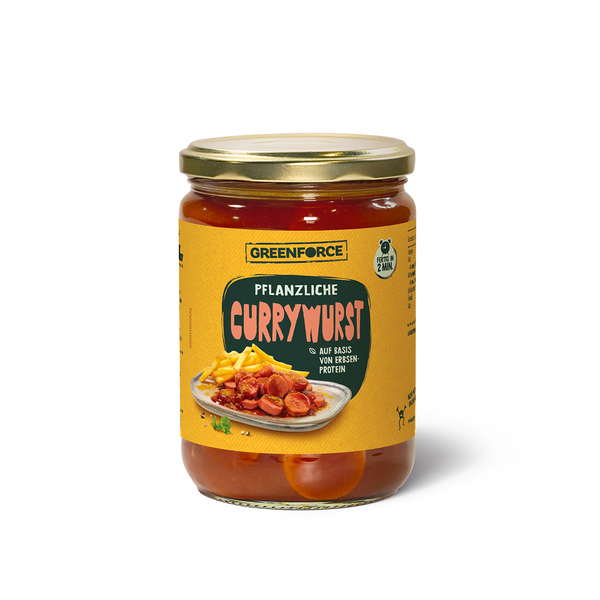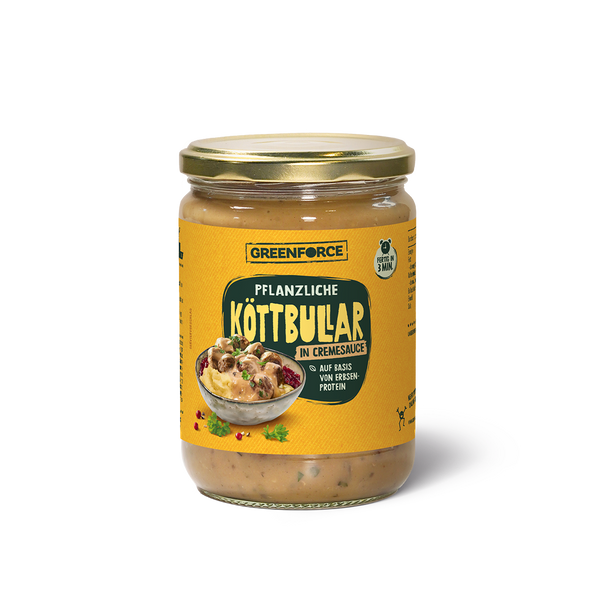Grain allergy - How can a vegan diet help?
Theresa Aicher
02/05/23
Reading time: 8 minutes
Digestive problems, diarrhea and stomach cramps can have many causes. If it occurs through consumption of grain products, those affected often interpret this as gluten intolerance. According to current screening studies, on average around one in 300 people in Germany suffer from celiac disease. A fruit allergy or, for example, a carbohydrate intolerance are also possible triggers.
However, another possible cause of the health problems is the grain allergy, which occurs comparatively much less frequently. By switching to plant-based foods as vegan alternatives, you can completely avoid a wheat or rye allergy and thus any allergen.
What triggers a grain allergy in your body?
In contrast to celiac disease, an allergy of this type is an overreaction of the immune system. It relies on substances that are considered harmless. In this case, however, the body's own cells are not specifically attacked by the immune system. This is the case with celiac disease.
The triggers for a grain allergy are the protein components in the outer shell of the grain or gluten components that are found in the flour. Problems always arise when the human organism incorrectly recognizes these components of food as enemies.
Do you suffer from a rye allergy or a corn intolerance? Then the body's immune system immediately floods the organism with antibodies upon first contact with the allergens. He tries to fight the supposedly unwanted intruder. If the protein components of the grains used in the respective food then meet the sensitized immune cells, this leads to inflammation. This then manifests itself in abdominal pain and intestinal problems.
At what age do grain intolerances most often occur?
Even though allergic reactions to all or certain types of grain occur relatively rarely, they are still among the most commonly diagnosed food allergies.
Common allergies mainly occur in:
- nuts,
- eggs,
- Milk,
- fish and
- soy
In Germany, a grain allergy is usually a wheat allergy . In contrast, rice allergy is widespread in Asia and corn intolerance is widespread in the USA.
Whether wheat or corn intolerance - in most cases, grain allergies first appear in infancy and toddlerhood. In many cases, the symptoms disappear again by primary school age.
However, if the symptoms of grain intolerance continue to occur, those affected can usually get them under control through a conscious diet on a daily basis. However, in adults there is a risk of triggering the so-called bronchial asthma (here: baker's asthma etc.) by inhaling flour dust.

Background: Which types of grain are particularly critical?
Different types of grain can act as a trigger for allergies . Basically, cereals are the grains of the sweet grasses (Poaceae). These take up a large part of the world's usable land in a cultivated and refined form.
Certain grasses are also considered to be the cause ofhay fever or a pollen allergy. The grains of the typical regional cereals are used to produce staple foods and luxury foods. They therefore represent an essential cornerstone of nutrition.
The most important grains for human nutrition include:
- rice
- Corn
- rye
- barley
- millet
- Oats
- Wheat and the various original forms (emmer, kamut, spelled, green kernel etc.)
Different types of grains offer a wide range of uses.
In Germany, the local grains grown are wheat, rye, barley and oats . Accordingly, they are the most widespread. Grain can be used in many different ways and is contained in many food products.
Typical examples of this are bread, pastries and pasta. It is also processed, for example, in the form of grain coffee, breakfast cereals, grain coffee and grain sprouts. Beer and spirits are also based on grain components in their production.
The food industry uses grains processed into flour as:
- release agent
- Carrier for aroma compounds as well
- Binding agent for soups, sauces or creams.
What many people don't know : Some manufacturers also use wheat, rye and other types of grain in the production of care products, medicines, cosmetics and dragees. Given these diverse areas of application for grain components, it is sometimes difficult not to come into contact with wheat, rye and the like.
Where are the allergens in the grain?
Regardless of the type of grain, the allergens that cause an allergy are located directly beneath the husk of the grain. As a result, many protein components are removed during the peeling process as part of the respective processing processes. If you are affected by allergic symptoms after eating grain products, the type of flour is particularly important for you. Wheat or rye in particular are often processed into flour during the manufacturing process in a wide variety of products.
This indicates how thoroughly the grain has been hulled. The following applies: the higher the type number, the less of the grain was ultimately removed. Conversely, this means for you as an allergy sufferer that, in case of doubt, a low type number also means less critical substances.
However, you should take into account that from a nutritional perspective, flours with a high number of types are particularly recommended.
The reason for this is that flour with a high number of types also has a correspondingly high nutrient content. A low number of types, on the other hand, means a lower nutrient content.
What allergic symptoms can occur?
If you are allergic to grains , you may experience various symptoms within a few minutes of eating them. Others only started after a few hours. Some reactions are strongly reminiscent of the effects of a pollen allergy or hay fever.
These are the typical symptoms of grain allergies:
- itchy and watery eyes
- red spots and hives
- Facial swelling and itching
- wheezing and shortness of breath
- strong urge to cough
- Diarrhea, abdominal cramps, nausea and vomiting
- Swelling, burning or itching in the mouth and throat
- a stuffy nose
Children who suffer from neurodermatitis can often experience a sudden worsening of their eczema hours later after consuming grain .
Rare but possible - anaphylaxis can cause life-threatening symptoms
As an immediate measure for allergic reactions to all or different types of grain, doctors often recommend the so-called oligoallergenic diet. This diet avoids all foods that could trigger the respective symptoms.
If the grains or products that trigger the problem have already been identified, you as the affected person can then adapt and expand your diet accordingly. Experience shows that in many cases allergic reactions are limited to wheat and related grains. Therefore, it is usually not necessary to completely avoid grain products .
Defy your allergy successfully with a vegan diet
You also always have the option of using vegan alternatives if you have a grain intolerance . The spectrum of plant-based foods has grown enormously and offers you a wide range of choices. The Greenforce company in particular is a good address for plant-based foods for allergy sufferers.
Unless you have a fruit allergy or carbohydrate intolerance , fruits are also a good alternative to snacking. Greenforce's product range includes vegan food products that you can mix yourself for cooking, snacking, brunch and baking in powder form.











